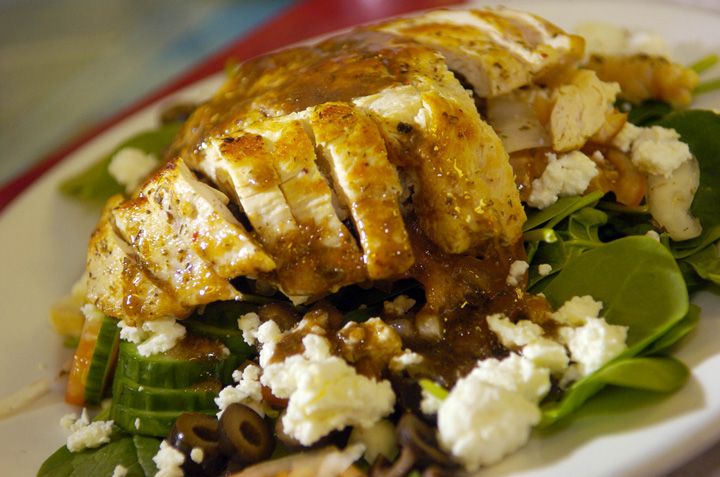TORONTO – Living out of a suitcase while on vacation is only one of the challenging logistics of travelling. Eating healthy without access to a stove, fridge and grocery store is another hassle that can leave some tourists returning home with souvenirs, memories, and some extra pounds around the waistline.

“It’s not being in control. You tend to end up eating in restaurants where serving sizes are bigger, and you have no control over what’s being put in your meals,” registered dietician Carol Dombrow told Global News.
Dombrow has worked at the Heart and Stroke Foundation for the past 20 years.
“If there isn’t nutrition information, it’s very hard to judge if you’re making a healthy choice,” she said.
Dombrow offers these five tips to help all the summer tourists trying to make wise choices while exploring the world.
Take or buy a cooler
Depending on how you’re travelling, Dombrow suggests packing a small cooler to bring with you so you can stock up on fresh fruit, vegetables and water.
Read more: Healthy grilling: 9 tips for healthy summertime barbecuing
She also suggests complementing that with whole grain crackers, cereal bars, nuts and seeds. Together, that cooler could supply some easy snacks or breakfasts instead of grabbing pastries and iced coffee to go.
If you’re about to board a plane, you may not be able to bring your own beverages, but sandwiches and snacks are still fair game.
Plan your eating

Get weekly health news
Just like itineraries are built around sightseeing and scheduling tours, figuring out where you’ll eat and what you’ll dine on is a big part of healthy travelling.
If you know where you’ll be eating at night, try to look at menus online beforehand and see if you can plan a healthy choice.
Some restaurants have nutrition information on their websites or on their menus, Dombrow said.
Read more: What Canadians want to know about what’s in fast food meals
“It’s the same as everything else you do in your life, but when it comes to food, we tend not to plan so much, but it’s the key to healthy eating,” Dombrow said.
“You may be ordering an eight-ounce steak, but you don’t know if there’ll be sauce, what kind of oil and how much is being used.”
Track your eating
This can be done using mobile apps or even a journal. Dombrow says this step is key because it’s easy to forget and overindulge when you’re on vacation. Recording your calories in your wallet (kind of like keeping track of what’s coming out of your wallet) can help reel in overeating.
“It makes you aware of what you’re doing otherwise you could have three frozen drinks on a hot day and not even realize it,” Dombrow said.
“You certainly want to have fun and good food really contributes to that,” Dombrow said.
Limit your treats to one per day – save it for the best gelato in town or don’t feel as guilty if you splurge on dinner if you’ve made good choices throughout the day.
Share
If you end up in restaurants a lot throughout your trip, share your meals with your travel buddies.
You can always order more if there’s not enough to go around, but Dombrow suggests that diners would be surprised at how satisfying half portions are.
Read more: Top 10: Some of the worst foods for your heart’s health
Most restaurants will happily accommodate splitting a dish in the kitchen.
Make it plain
An easy way to make healthy swaps to your dishes is to choose the smaller portions and don’t pile up on condiments and side dishes. For burgers, that could mean ordering a single burger instead of a double patty and forgoing the cheese and mayonnaise.
Grilled chicken sandwiches are the healthier option next to fried chicken sandwiches, too.
“Simple changes can make a big difference to the number of calories and the amount of sodium that you end up consuming,” Dombrow said.
Some tourists say that they can eat as they please because they’ll walk the calories off with all the ground they’re covering.
That may not necessarily be true, Dombrow warns.
Read more: 5 healthy fast food swaps
“It depends on where you’re going and what you’re doing. You are more active but it takes a lot of walking to use calories. Like, really a lot of walking,” Dombrow said.
“So I don’t think there’s 100 per cent truth in that statement,” she said.
carmen.chai@globalnews.ca
Follow @Carmen_Chai










Comments